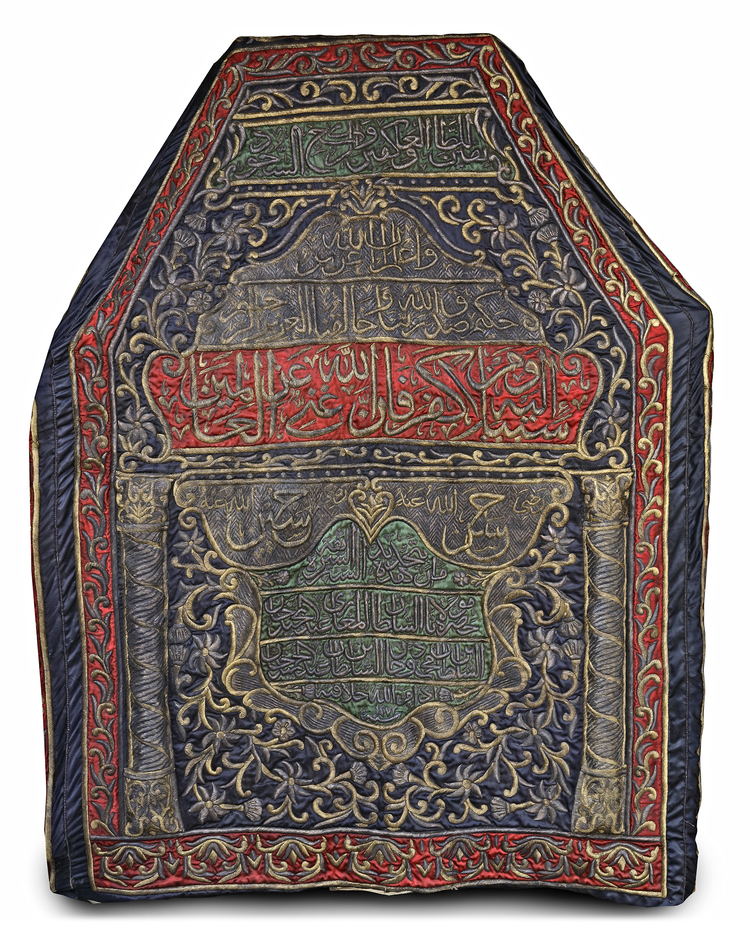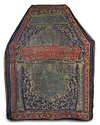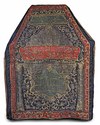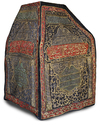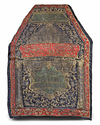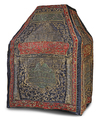AN OTTOMAN METAL-THREAD EMBROIDERED MAQAM IBRAHIM COVER, 1272 AH/1855 AD
The lower cubic section surmounted by canopy in the form of a pyramid, of red, green and black silk profusely embroidered with silver and gilt-silver thread to each side. The lower cubic section surmounted by canopy in the form of a pyramid, of red, green and black silk profusely embroidered with silver and gilt-silver thread to each side. The lower section with large cartouches to each side enclosing Quran 3 surah Al-Imran v.96-v.97 in large thuluth script on a red ground, below to each side an inner mihraab with columns embellished with large cartouches on green silk ground enclosing Quran verses surah Al-Israa v.84, surah Al-Baqarah v.127 and the inscription of 'made during the reign of sultan Abdulmejid I in 1272 AH', surrounded by vines and floral sprays. The pyramid section to each side with a small cartouche embroidered with silver wires enclosing surah Al-Baqarah v.125 on a green ground, above a a cartouche containing surah Ibrahim v.35-v.36 on a silver embroidered ground. The border with a band of interlocking palmette motifs.
200 by 140 cm.
CATALOGUE NOTE
Maqam Ibrahim, or the Station of Abraham, is a revered site within the Masjid al-Haram in Mecca. It houses the stone bearing the footprints of Prophet Ibrahim (Abraham), believed to have been left during his construction of the Kaaba with his son Isma'il (Ishmael). As the walls of the Kaaba rose, Ibrahim stood upon this stone, which miraculously elevated him to continue building while Isma'il handed him stones from below.
The Quran highlights the significance of this site: "And take the Station of Abraham as a place of prayer." (Surah Al-Baqarah, v.125).
Historically, the Maqam Ibrahim was adorned with a kiswah, a decorative covering similar to that of the Kaaba. Since the Mamluk era, Egypt has supplied this kiswah annually. It consisted of four wall panels embroidered with Quranic verses, the names of Allah, Prophet Muhammad, the four Rashidun caliphs, and the Prophet’s grandsons, Hasan and Husayn. The inscriptions included verses from Surah Al-Baqarah (v.125, v.127) and Surah Al-Imran (3:96–97), referencing the construction of the Kaaba, the Station of Abraham, and the obligation of pilgrimage.
